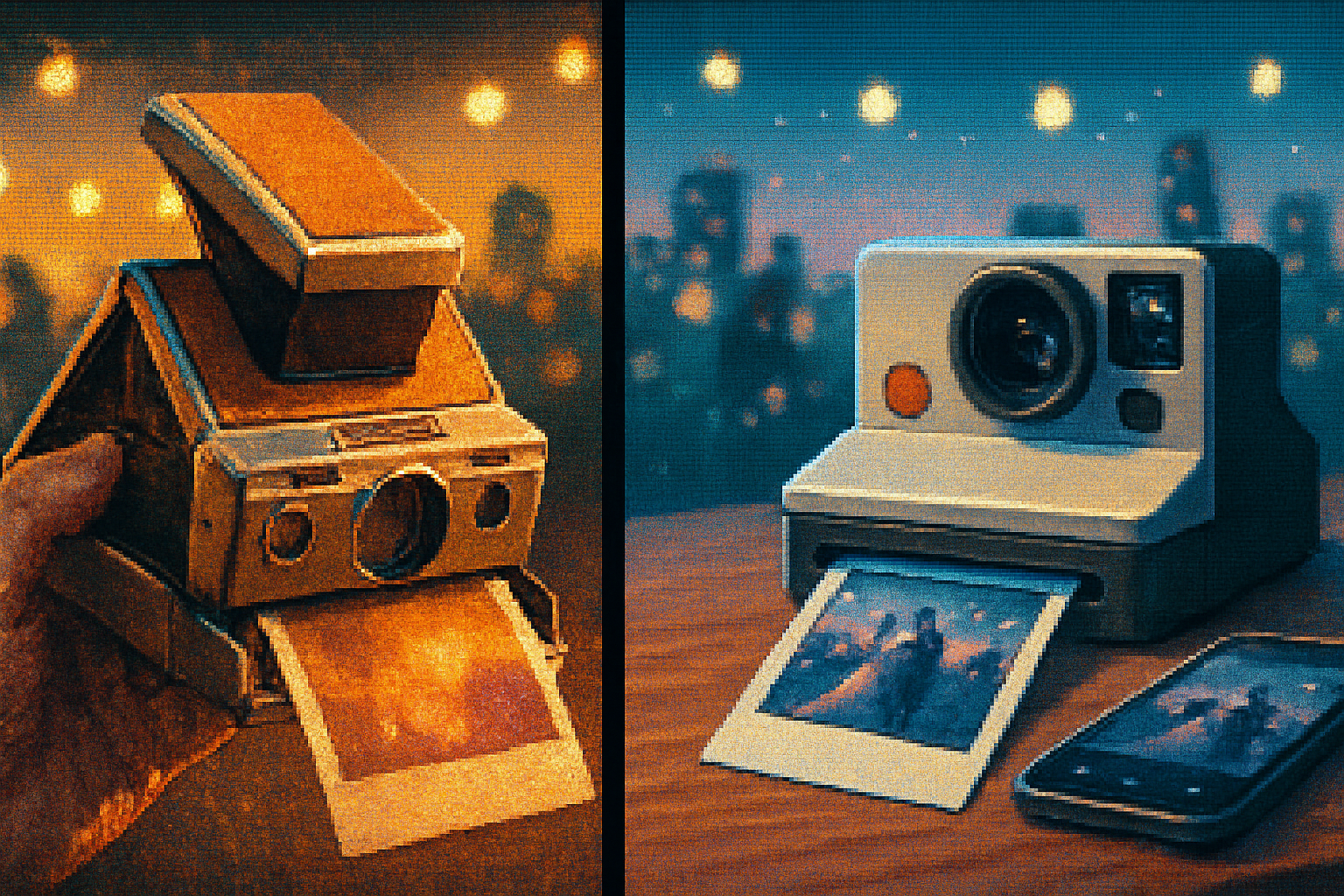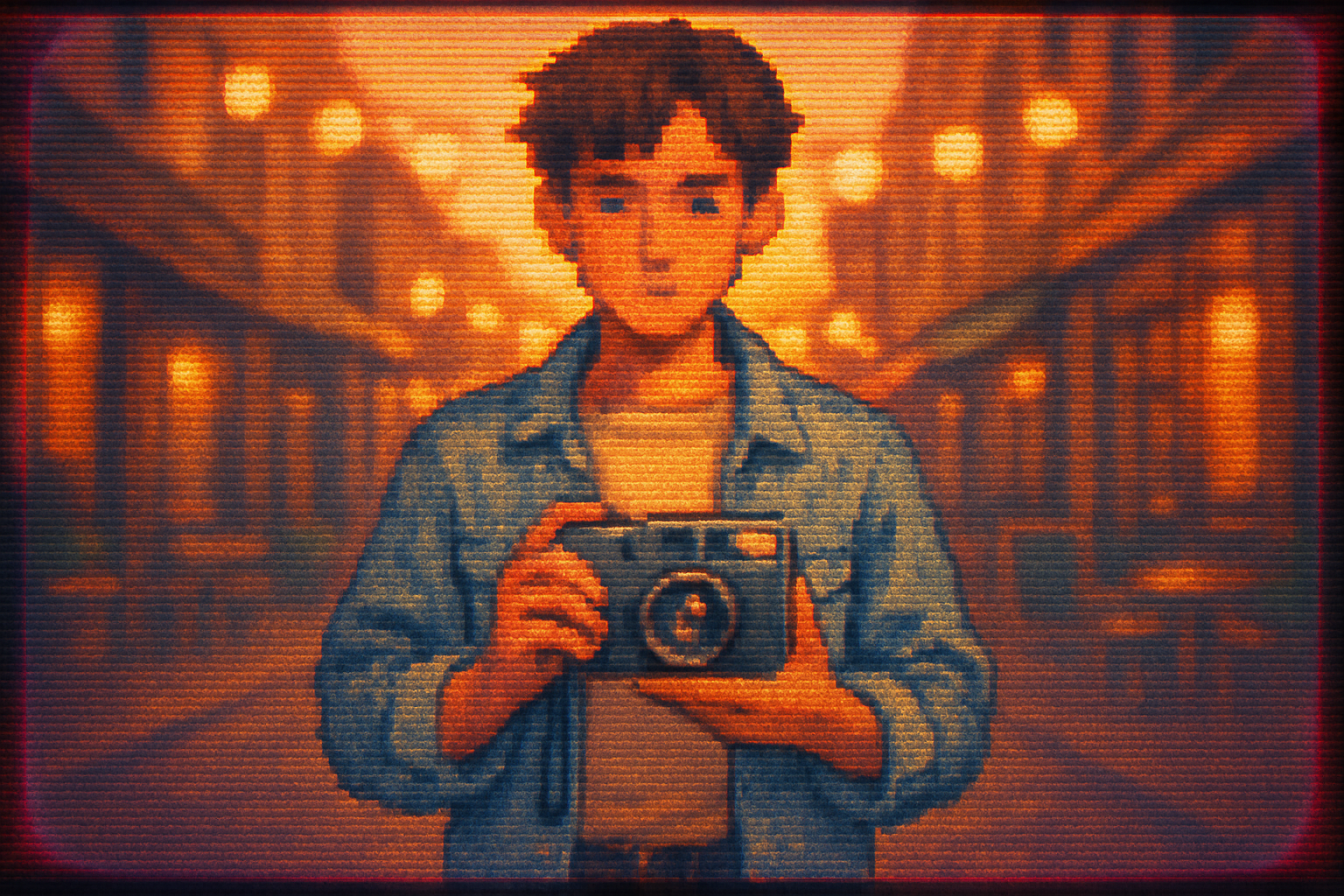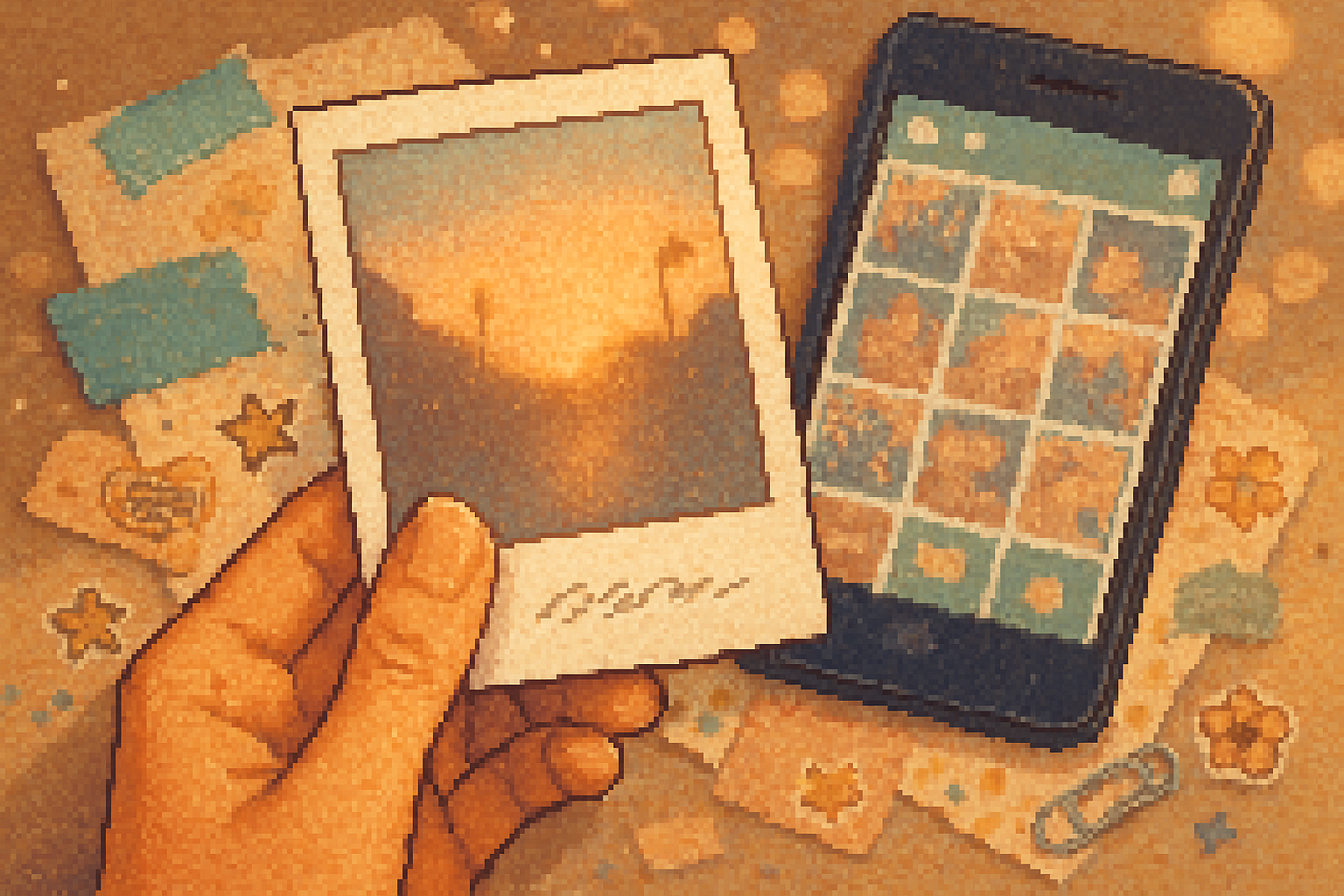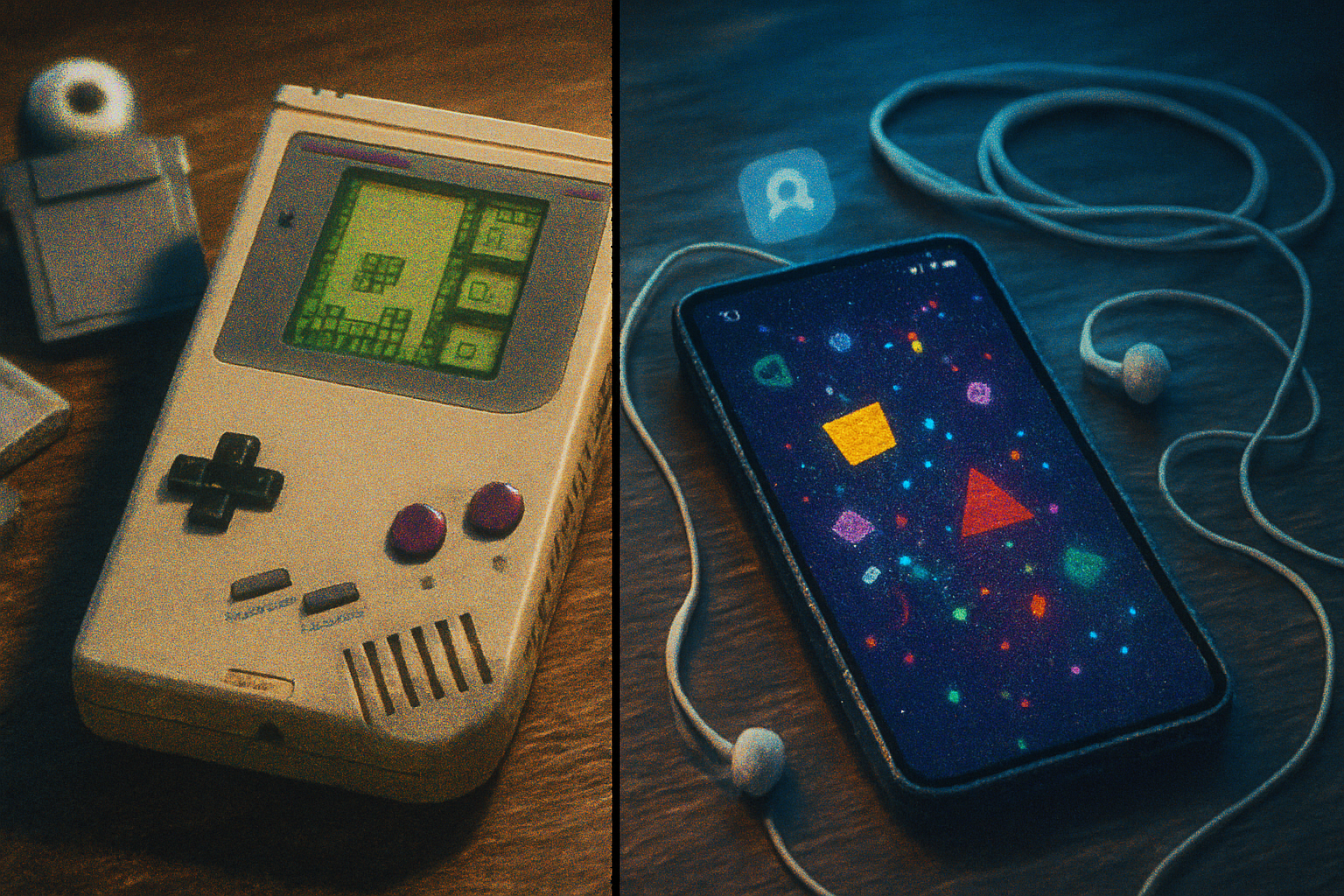· culture · 6 min read
The Kodak Moment: Rediscovering Analog in a Digital World
As smartphones dominate image-making, film and instant photography have staged a surprising comeback. This article explores why analog is resurging, what 'nostalgia' does to individuals and societies, and how the tactile, imperfect nature of film reshapes how we remember, share, and value photographs.
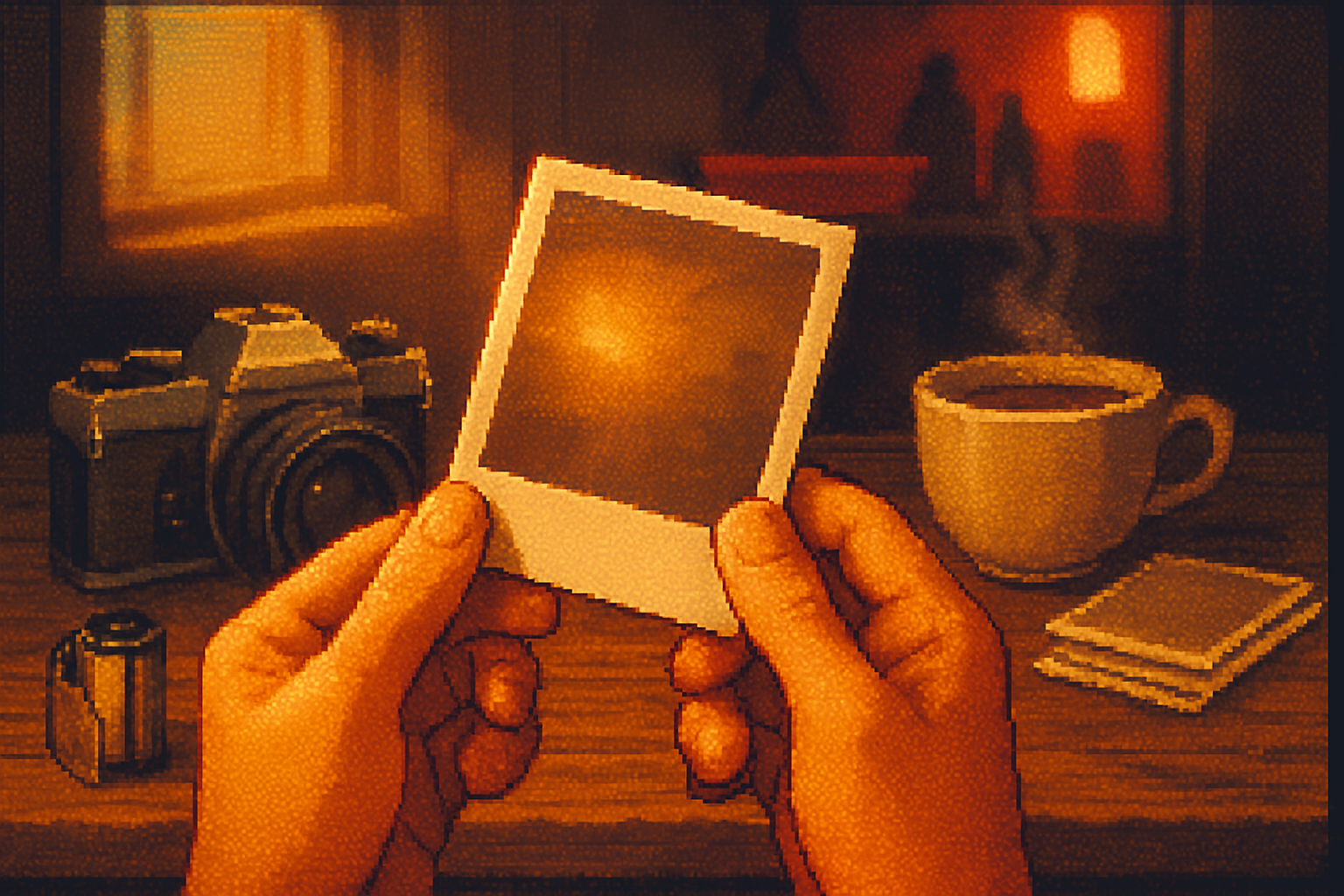
Why, in the age of flawless megapixels, are people returning to film?
For decades the camera on your phone has been the default image-maker: instant, infinite, high-resolution, algorithmically curated. And yet, across darkrooms, hip cafés and thrift stores, a quieter trend has been gathering steam: people buying 35mm cameras and boxes of expired film, hunting for Polaroids, and handing instant prints from Fujifilm Instax across kitchen tables. The phrase “Kodak moment” - once shorthand for capturing a picture-perfect instant - has begun to mean something more complicated: a deliberate, analog pause in a digital life.
This post explores why analog photography is resonating again, the social and psychological forces behind nostalgia, and what that resurgence says about how we want to remember our lives.
A quick historical snapshot
Photographic film dominated personal photography for much of the 20th century. Instant photography (Polaroid) brought immediacy in the 1940s and later became a cultural icon. The rise of digital cameras and then smartphone photography in the early 2000s made film seem obsolete for most consumers. Still, niche communities kept film alive: artists, hobbyists, and companies like Lomography preserved an analog ethos and practice see Lomography.
In the 2010s and 2020s a notable reversal occurred: renewed sales for film stocks, booming popularity of instant formats like Fujifilm Instax, and a resurgence of film-camera culture in cafés and social-media subcultures. The long arc-from dominance to near-obsolescence to comeback-has cultural logic as well as technical dimensions.
Why analog? Four overlapping reasons
- Tactility and materiality
Film gives you a physical object: a strip, a negative, a print. That tangibility is meaningful in a world of intangible bits. Handling a negative, processing chemicals, or waiting for an Instax to develop engages senses in a way a touchscreen cannot.
- Slowness and intention
Shooting with film tends to slow the process. Film is finite and (often) costly; that scarcity forces photographers to think twice about each exposure. The result is often more deliberate composition and more considered documentation-qualities that feel scarce in a scroll-driven culture.
- Aesthetics and unpredictability
Film’s grain, color shifts, light leaks and vignettes produce an aesthetic many find emotionally resonant. Imperfection becomes beauty: texture, flare and the quirks of expired film or cross-processing are prized for their uniqueness.
- Social signaling and community
Using a manual camera, visiting a darkroom, or swapping Polaroids signals membership in a creative community. Shared rituals-developing film, swapping scans, hosting photo walks-forge social bonds that are hard to replicate through automated filters or mass-market apps.
These reasons help explain why analog has moved from a nostalgic pastime to a living practice for people across ages.
The psychology of nostalgia: why analog feels right
Nostalgia is not just sentimental longing; psychological research shows it can boost mood, strengthen social bonds, and create meaning in times of uncertainty see The Scientific Power of Nostalgia. Film photography often acts as a vehicle for this nostalgia: it recalls childhood polaroids, printed family albums, and the tactile rituals surrounding photography in earlier decades.
But nostalgia does double work: it comforts and it constructs. In a fast-changing world people turn to analog artifacts to anchor identity and continuity. The deliberate pace of film-making becomes an antidote to ephemeral, algorithmically prioritized digital memory.
The cultural impacts: memory, authenticity, and curation
Memory and archival practice - Physical prints and negatives change how we archive. Hand-labeled prints and boxes of negatives become heirlooms in ways that cloud backups rarely do.
Authenticity and trust - Film’s unpredictability undermines the always-perfect expectation placed on digital images and re-introduces the idea that a photo is a record of an event with limitations. In an era of deepfakes and heavy editing, imperfections can be read as more “authentic.”
Curation and scarcity - Scarcity forces curation. With limited frames, people often choose-and remember-more intentionally. Analog photography encourages editing at the point of capture rather than endless post-production.
Democratization and exclusivity - Ironically, while analog practices can democratize creativity (cheap cameras, community darkrooms), there is also a boutique market around premium film and cameras that can be exclusionary. The cultural landscape is thus mixed: accessible entry-level instant formats coexist with expensive medium-format film and collectible vintage gear.
Business and industry notes
Companies have noticed. Fujifilm’s Instax line and revived interest in Polaroid-style cameras show that instant analog formats are commercially viable again. At the same time, manufacturers of film and chemistry-and niche labs-have scaled to meet renewed demand, ushering some traditional practices back into mainstream commerce see Instant camera history and the broader film photography overview Film photography.
Environmental and practical considerations
Analog isn’t automatically greener. Film manufacturing and chemical processing involve environmental costs. Single-use instant formats produce waste. If you choose analog, consider responsible practices: buy only what you’ll shoot, use local labs with proper chemical handling, and explore recycling options for packaging and plastics.
Criticisms and limitations
- Cost and access - Film, processing and equipment can be expensive and, for some, financially prohibitive.
- Fragility - Physical negatives and prints need proper storage to survive decades.
- Romanticization - Sometimes people romanticize an imagined past, overlooking the biases and inequalities of earlier photographic cultures.
Recognizing these limits helps keep the revival honest: it should be about meaningful practice, not just aesthetic affectation.
How to dip a toe in (practical starter guide)
- Start small - Try an instant camera like a Fujifilm Instax or pick up a consumer 35mm point-and-shoot.
- Learn the workflow - Find a local lab or mail-order developer. Understanding processing will deepen appreciation.
- Embrace limitations - Try a 24-exposure roll and resist the urge to shoot hundreds of frames the way you might on a phone.
- Join the community - Photo clubs, online forums and local darkrooms are rich resources.
The larger takeaway: what a “Kodak moment” means now
The original marketing intuition behind the phrase “Kodak moment” was simple: photography freezes meaningful life events. Today, rediscovering analog redefines that freeze. A “Kodak moment” in the analog revival is less about perfect reproduction and more about deliberate capture: the pause, the ritual, the tangible keepsake.
Rather than rejecting digital, most people embrace hybrid practices-film for certain projects, digital for others. The resurgence of analog is less an either/or and more a recalibration: choosing slowness, tangibility and embedded ritual in a world that increasingly runs on speed and disposability.
Further reading and resources
- “The Scientific Power of Nostalgia” - The Atlantic: https://www.theatlantic.com/magazine/archive/2014/03/the-scientific-power-of-nostalgia/357564/
- Film photography overview - Wikipedia: https://en.wikipedia.org/wiki/Film_photography
- Instant camera history - Wikipedia: https://en.wikipedia.org/wiki/Instant_camera
- Lomography - Wikipedia: https://en.wikipedia.org/wiki/Lomography
- “Kodak moment” (phrase history) - Wikipedia: https://en.wikipedia.org/wiki/Kodak_moment
